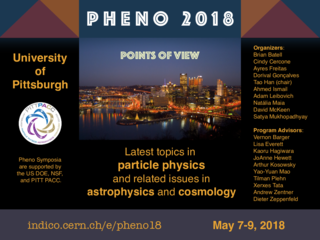Speaker
Description
Dark matter (DM) particles that belong to a multiplet of the standard model (SM) weak interactions are challenging to probe in direct detection experiments due to loop-suppressed cross-sections, while indirect detection is a promising avenue if a single particle species saturates the DM relic density. There is, however, a large range of the DM particle mass where it constitutes only a fraction of the total DM relic density (if produced entirely through thermal freeze-out), rendering indirect detection less promising. Direct production at colliders is thus crucial to probe this mass range. Due to the small electroweak production cross-section, and absence of clean experimental handles, searches at hadron colliders remain challenging as well. The current expectations for future runs of the 14 TeV LHC are projected to probe DM masses of around $250$ GeV for an ${\rm SU}(2)$ doublet (Higgsino-like), and $800$ GeV for an $\rm{SU} (2)$ triplet (wino-like). In this paper, we estimate how far this mass reach can be extended at the proposed 27 TeV high-energy upgrade of the LHC (HE-LHC), and compare the results to the case for a 100 TeV hadron collider. With the new B-layer inserted in the ATLAS tracking system for the Run-2 LHC upgrade, a disappearing charged track analysis at the HE-LHC can probe Higgsino-like (wino-like) DM mass of up to $600$ GeV ($2.1$ TeV) at the $95\%$ C.L., making it complementary to the indirect probes using gamma rays from dwarf-spheroidal galaxies. The monojet and missing transverse momentum search, on the otherhand, has a weaker reach of $490$ GeV ($700$ GeV) at $95\%$ C.L. for the Higgsino-like (wino-like) states.

